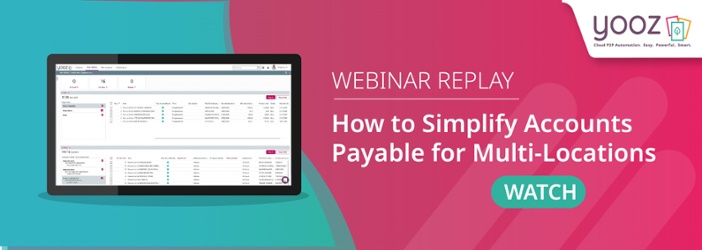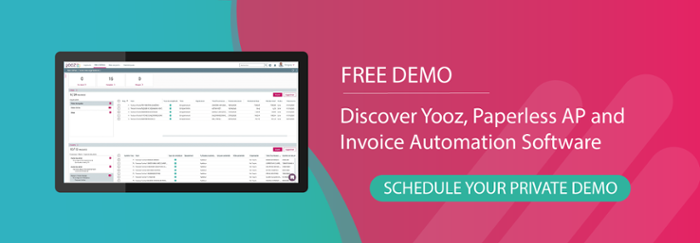Cooking meals professionally is both a craft and an art. In fact, it’s so hard that technologists are still struggling to teach robots how to do it. Since all the steps until a dish is ready to be plated require complex bimanual skills, scientists recently reported that they had to use human demonstrations to help a new robot learn to cook a stir-fry.[1]
Chefs, on the other hand, excel at this kind of complicated multitasking. Yet running a successful restaurant comes with many other, more mundane tasks that call for complex workflows beyond the stove. Vendors need to be selected, orders placed, inventory tracked and replenished to accommodate changes, invoices processed and paid, and finally the books have to be reconciled on short cycles to get an accurate view of the health of the business. It’s an area where robots can actually help.
Software for automated invoice processing lets a restaurant streamline its back-office operations management, significantly improving the restaurant invoice management process. A platform will do away with repetitive manual tasks, reduce or eliminate paper, and move the whole payable process into the cloud. Automation cuts down on errors, mistakes, and delays. As a result, chefs can focus more on the creative side and on growing their business, keeping both their suppliers and their guests happy.
The Unique Challenges of Restaurant Invoice Processing
The hospitality business differs from other industries as it’s defined by high velocity turnover, short payment cycles, and seasonal fluctuations that determine what goes into the pan and onto the menu. Chefs need to manage dozens of vendors who have to reliably restock inventory, often on a daily basis in multiple locations. Just one missing product can cause an entire shift in the menu. What’s more, their staff expect to be paid in short intervals, including proper accounting of tips. Hiccups like a misplaced invoice, late payments, or delivery gaps can wreak havoc with a business plagued by thin margins and fickle tastes.
Therefore, it’s crucial to always have optimum visibility into the rolling boil of purchase orders, delivery receipts, and invoices on a daily basis. An automated system solution that’s purpose-built to capture all of those documents quickly and reliably will process invoices all the way through payment with as little human intervention as possible. It can make the difference between scraping by or getting ahead.
Automated restaurant invoice processing follows a simple recipe for success. It consists of five steps that reduce the need for manual processes, saving time and money and creating resilience for the entire business.
Automation Captures Every Invoice, Every Time
The first step is multichannel capture. All documents, regardless of their format, are ingested by the system the moment they come in. A cloud-based platform such as Yooz has the decisive advantage of having seen millions of different purchase orders and invoices from thousands of vendors, giving it a large training set to power automatic capture.
Next, robotic process automation and machine-learning algorithms extract all important information from each document, from invoice number and items delivered to due dates, bank, and tax information. The data is indexed and securely stored in the cloud, making it accessible with a simple keyword search.
Third, if the values match up, invoices are routed down the line for either approval or for further review to solve any exceptions. Each restaurant can set up the workflow that fits its needs, for instance channeling all food invoices straight to the chef or expediting recurring invoices for fast-moving items like bread or produce for automatic payment.
Click and Done: Approvals from Any Device
Since manual entry is no longer required, the error rate associated with a manual payable process noticeably drops, reducing the risk of false or duplicate payments that might previously have slipped through. Review and approval can happen from anywhere on any mobile device such as when the owner or chef only has their tablet or smartphone handy while taking stock of the day’s deliveries or going over the next few days’ reservations. It’s a flexible process with multiple features that adapt to each restaurant’s particular ebb and flow.
Invoice automation pays off almost instantly. Processing costs per invoice drop by 80% and cycle times shrink to days or even hours. Speed also translates into no more late fees and capturing all early-pay discounts available.
Step four in this recipe for success is handling payments. This step can be set up in the same intuitive interface where capture and review take place. Suppliers are onboarded with a single email address and, once they’ve selected their preferred payment method, an automated platform like Yooz will handle the rest.
Keeping Suppliers Happy and Books Organized
Restaurants only need to select the invoices to be paid, the full or partial amount and the payment schedule before the platform will initiate electronic or, if desired, paper check payment. If a hospitality business chooses to pay with a virtual credit card, it can also accumulate valuable cash-back with each invoice. It’s an often-overlooked revenue source that can make a tangible difference for a low-margin business.
The final step in the invoice processing workflow - step 5 - is also an important one to keep the restaurant humming. Once invoices are paid, the system will export that information to the organization’s financial software and reconcile it with purchase orders. When the books need to be closed every night, right after the team finishes with clean-up, smart automation translates into a restaurant operator's peace of mind.
The Digital Kitchen
There’s another benefit to streamlining restaurant invoice processing. It keeps vendors happy as every invoice is paid on time, every time. Suppliers can track their payment status and become part of a small business network built around your kitchen or eatery. Loyalty is a key ingredient to make sure the shelves are always fully stocked.
Smart invoice automation lets the restaurant staff focus on building and maintaining better vendor relationships and get the most out of their supply chain - now more important than ever given the level of culinary competition and inter-dependencies along the food supply chain.
Back to the robot struggling with a stir-fry. “Creating a robot chef in the semi-structured kitchen environment remains a grand challenge," admits one of the scientists involved. While we’re years away from robo-chefs and waiters, digitalization and automation have arrived in the hospitality industry. The first semi-smart machines are getting headlines for preparing burgers and pizza, while service robots already bus tables. Restaurants used the pandemic to experiment with various apps to streamline the entire dining experience, from order to payment.
Future Fare: When the Robots Roam, Chefs Can Focus on Cooking
Today's reality is that whether a restaurant specializes in take-out and delivery or emphasizes sit-down meals, it needs to have a plan for its digital future. New robots and software will require additional investments in terms of time and money to track their performance and keep an eye on maintenance or upgrade needs.
An end-to-end platform that keeps tabs on the entire workflow from purchase order to payment brings together all the bits of information in one place. And it’s a good starting point to rethink the business of making memorable meals.
Why not let the robots roam, so the chef can be more creative?
FAQs
How can Yooz help restaurants manage their invoice processing more efficiently?
Can Yooz integrate with restaurant management and accounting software?
How does Yooz handle invoice discrepancies and exceptions in the restaurant industry?
Can Yooz support the processing of food and beverage invoices that have specific tax requirements?





